How Long Can A Cat Go Without Water?
How long can a cat go without water? The truth is that cats can survive longer without food than without water. Like humans, hydration is necessary for felines. Dehydration will set in if your cat doesn’t get to drink water within 24 to 48 hours. If dehydration lingers, a cat will die on the third or fourth day due to organ failure. Factors including your cat’s health, weather, and presence of food will also affect your cat’s rate of survival. This is the reason why you should never push your cat to the limits by depriving it of drinking water.
How long can a cat go without water?
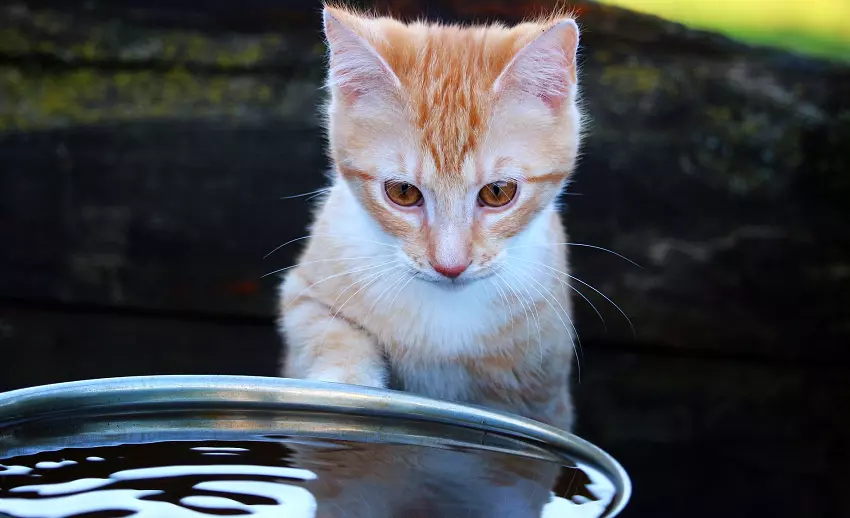
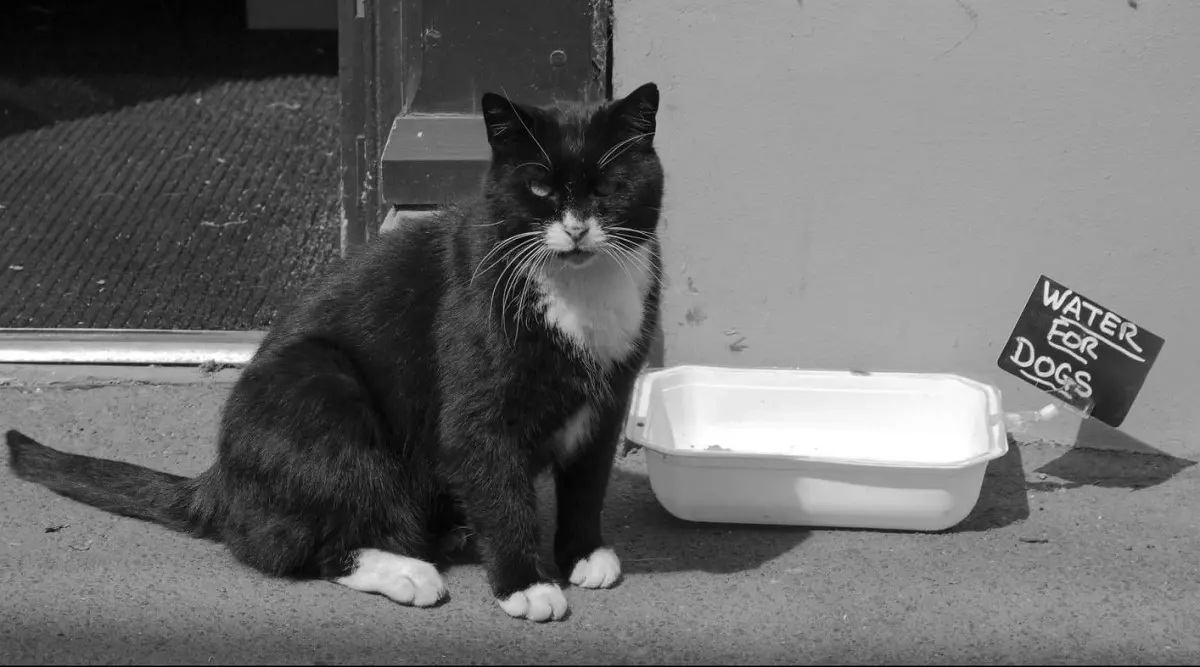
A cat’s body is made up of 75% water. This is why cats should never be left without a water source for longer than 24 hours. If the weather is hot, this time window shrinks to 12 hours or less.
We also have to factor in the cat’s willingness to drink. Some cats that are suffering from various illnesses will refuse to eat or drink. This can be lethal in a matter of days so you should act fast.
On the first day of lack of water, your cat may appear normal. But as hours pass by, your cat will start to exhibit signs of dehydration. On the second to the fourth day of total dehydration, organ failure will ensue, and the cat will die a slow death.
Elderly and sick cats are prone to dehydration. As dehydration sets in, the electrolytes in your cat’s body plummets, followed by muscle weakness, poor appetite, and other symptoms.
Remember that unlike wild cats, house cats don’t have the freedom to explore for water resources. Also, it’s not wise to let your kitty drink around since stagnant water outdoors can be contaminated.
No matter how long your cat can go without water, you should never risk depriving it with hydration. If you’re going to work, you must leave them with fresh bowls of potable water. If possible, have someone check your cat if you can’t go home right away. Learn here how long can you leave a cat
Signs of dehydration in cats
Dehydration is a serious condition across species. If your cat is living without clean water for more than 24 hours, you must watch out for the following symptoms of dehydration:
- Loose skin. One of the tell-tale signs of dehydration is skin tenting. The skin, especially on the shoulders, tend to pull up and doesn’t snap back when pinched.
- Weakness. If your cat hasn’t been drinking and is starting to be lethargic, dehydration is already in the works. A cat that’s weak due to dehydration will soon refuse to eat as its appetite becomes affected.
- Sunken eyes. The same with humans, cats that are without a water source will have sunken eyes. The kitty’s eyes will look dull than usual.
- Elevated heart rate. As your cat’s body tries to cope with dehydration, it will start to pant as its heart rate rises. If not abated, the escalating heart rate of your cat may lead to cardiac arrest.
Once you spot these symptoms of dehydration on your cat, you must give it clean and cool water right away. However, if your cat refuses to drink, you must rush it to the vet immediately where it will be fitted with an IV drip to replace the lost fluids.
Also, vomiting and diarrhea will cause dehydration to set in faster. You should rush your cat to the vet if vomiting and diarrhea don’t abate within 12 to 24 hours.
How much water should a cat drink?
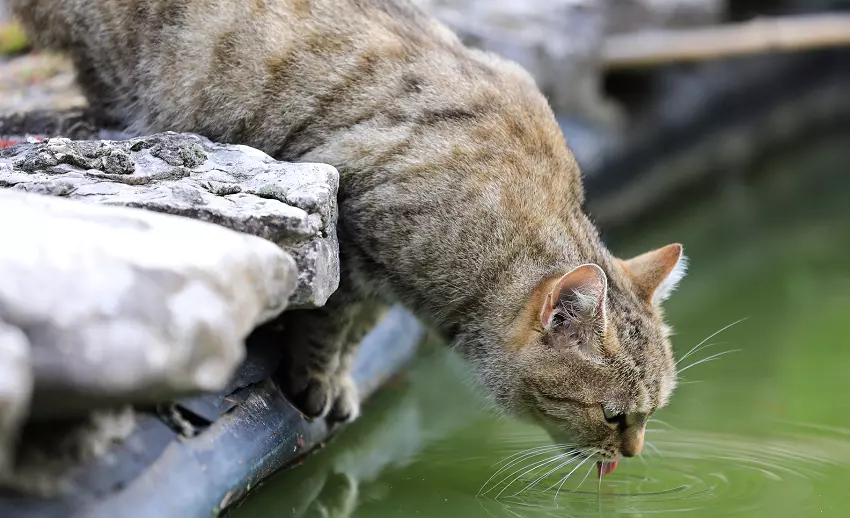
Cats are supposed to drink 3.5 to 4.5 ounces of water for each 5 pounds of its body weight each day. So if you have a 10-pound cat, it should be getting around 7 to 9 ounces of water daily. However, your cat may need to drink more if it’s very hot.
Take note that drinking isn’t the only way for your cat to consume water. Food is also a good way to replenish the lost fluids on your cat’s body while feeding it at the same time. Also read how long can a cat go without food
Is there such a thing as too much water in cats? Some cats may appear very thirsty, which can reach abnormal rates at some point. If your cat is gulping more water than it usually drinks, it might be dealing with stress.
Also, your cat might be experiencing a metabolic condition that makes it urinate frequently. And since your cat is losing fluids in the process of peeing, it will try to compensate by drinking more. The process goes on and on until the health problem has been addressed.
Some of the notorious causes of excessive thirst among cats are diabetes, chronic kidney disease, and hyperthyroidism. All of these require immediate medical attention. Please read here: How Long Can A Diabetic Cat Go Without Insulin
So how long can a cat go without water under these conditions? The answer is not much. Frequent peeing in cats will lead to more lost fluids. It will speed up the process of dehydration. Please read here: How To Find Cat Pee Accident Spots
How to get a cat to drink water?
If you’re worried that your cat is not getting enough water, you can do the following tips to encourage your kitty to drink more.
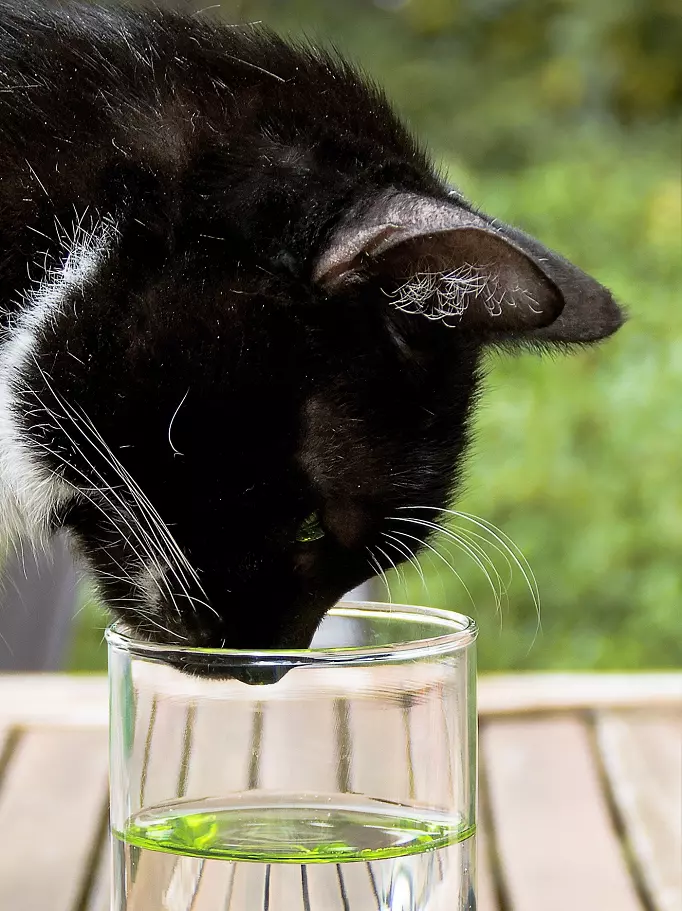
- Get a water fountain. Cats are beings of caution, so they are less likely to drink on stagnant water than a moving one in a fountain. A cat fountain locks in oxygen into the water to keep it fresh and appealing to drink. Also, the sound will entice your cat to take a sip.
- Clean the bowl. If your cat doesn’t mind drinking on a bowl, make sure that it’s always clean. Ask yourself, am I going to drink this water? If not, you must clean the bowl and fill it with potable water.
- Switch to wet food. Aside from drinking, you can increase your cat’s water intake through its food. Wet food contains as much as 70% moisture as compared to 10% on dry kibble. Aside from that, sick and picky cats gravitate more to wet food since it’s easier to consume.
- Place several water bowls. Unlike humans, your cat will not open the fridge to get some water. They may even forget to drink unless they are really parched. You can solve this by placing multiple water bowls all over your house.
- Consider broth. If your cat is lethargic and reluctant to drink and eat, low-sodium broth will help a lot. This will hydrate your cat while giving added nourishment to help strengthen its body.
Why is my cat not drinking water?
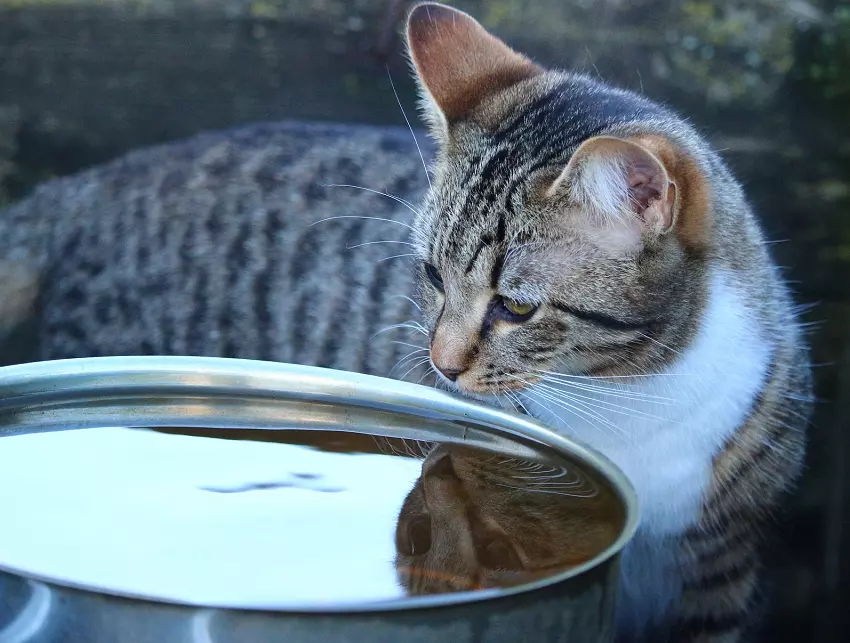
Just like refusal to eat, the reason behind not drinking is multi-faceted. Sickness is one of the reasons why, which causes poor appetite and lack of strength to reach the water bowl.
However, most behavioral reasons are resolvable. Many cats avoid the water bowl if it has a smell or taste they don’t like. Some cats may prefer the faucet than stagnant water so consider keeping the sink accessible to your pet.
Also, if your cat doesn’t seem to drink water at home, you should check where it goes. Your kitty may have found another water source, say your neighbor’s bird fountain.
Some cats would go on thirst and hunger strikes if they experienced sudden changes in the environment. If you’ve just moved, welcomed a new pet, or traveled with your cat, it’s quite understandable why your pet may avoid drinking for a few hours.
If you have two cats at home but one drinking bowl, one cat will tend to drink less than the other. It’s possible that one cat is bullying the other and holding the water bowl hostage. This is why you should increase the number of water bowls at home, especially if you’re welcoming a new kitty.
Conclusion
How long can a cat go without water? Most healthy kitties can tolerate thirst from 12 to 24 hours. However, this is never an excuse for you to neglect your pet. You should always give the kitty a water supply so it can drink anytime it wants to.
